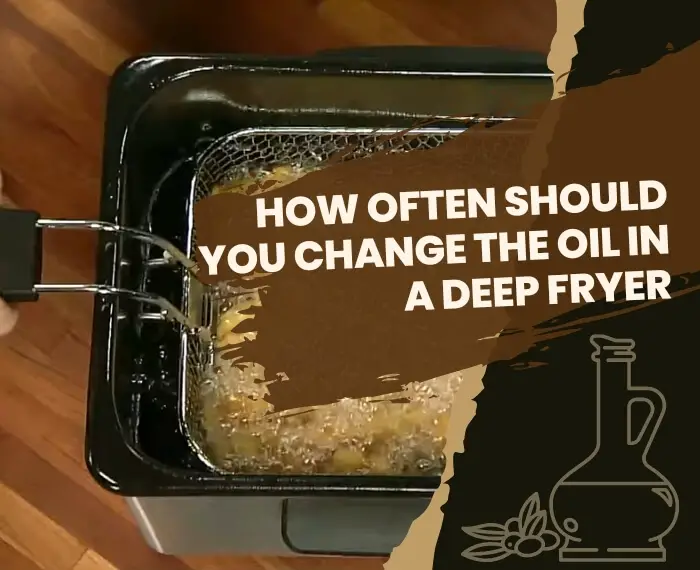Happiness is…..finding the lost fries at the bottom of your McDonald’s bag.
Well the answer to the question solely depends on the type of oil you are using, what are you frying, how much oil is expended to fry that portion of food, how frequently or how are you filtering the oil, how many times or hours the oil has been used, at what temperature the oil is put on, and how do you maintain the deep fryer.
What sorta oil is recommended?
Always go for oils that have a high smoke point at a specific temperature thereby making the food tastier.
At the “smoke point” the oil starts to break down and can have a foul odor or flavor. Following the smoke point, select oils that have maximum saturated and monounsaturated fats as they formulate the oil to be more stable at high heat.
And purchase oils that are conserved in a dark glass/canister, because it will reduce the exposure of sunlight.
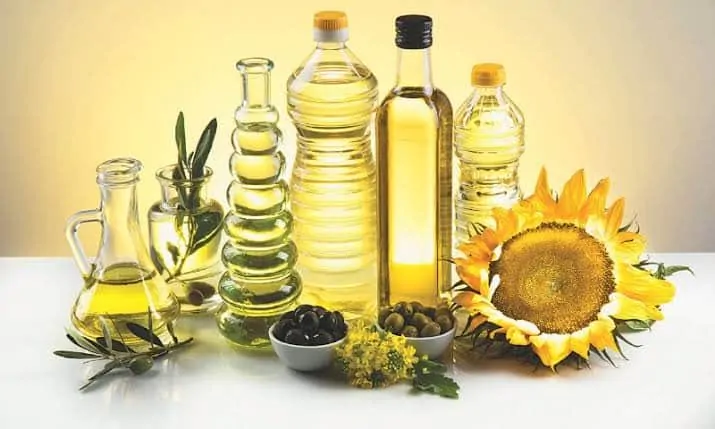
- Canola oil is widely used in deep frying as it has a high content of unsaturated fats, which gives rise to a healthier choice. The trouble with canola oil is they become distasteful very easily. So after unwrapping the canola oil bottle or container, always finish the bottle within six to twelve months for the best quality. Canola oil has an estimated smoking point at a temperature 450-degree Fahrenheit. So better use the oil at the precise temperature to hit the smoke point.
- Furthermore, olive oils can endure around 18-24 months from the moment of manufacturing, wherein virgin olive oils can last around 12-18 months. If your oil has outperformed the time period, that means it is going to rancid any time. Olive oil strikes the appropriate smoke point at 410 degrees Fahrenheit.
- Most jars of coconut oil in the United States come detailed with a “Best by” date, in order to prompt you that “ it’s time to renew your oil”. For those who aren’t aware, coconut oil has a naturally long shelf life. But however, you need to be cautious about expiration dates, maximum expiration a coconut oil could possibly last is, for approximately two years only if it is carried out with proper supervision.
- Vegetable oils have made the dilemma more complicated because once when you have opened the oil, it has to be used for the first two to three months for the best quality. Occasionally it could last for one year relying on the way you are maintaining it. While these kinds of oil achieve the smoke point at 400 degrees Fahrenheit.
- For an unopened avocado oil, it lasts for nine to twelve months when it is kept in the pantry. Whereas the opened bottles can be used within six months for good quality. Avocado oil attains the smoke point at 375-400 degrees Fahrenheit.
Factoid: Olive oil has the longest shelf life.
So yeah, what are you and your family’s most preferred oil?
What are you frying?

The food crumbs, use of high temperature to fry, and repeated use of the oil can affect the oil’s smoke point and hence by making the oil go rancid easily.
Presume you are frying battered food, always discard the excess batter to thwart debris in the oil. Do remember to pat dry the food before dipping it into the oil in order to avoid havocs. Always handle the deep fryer gently and don’t overload your food in a row to have a quick snack. Dumping all the food at the same time tends to ravage the oil very easily.
- For french fries, other non-breaded items, and veggies, change the oil after 6-8 uses.
- Whereas the oil should be replaced after the use of 3-4 times for breaded, meat, poultry, and crumbly foods.
- If you are frying fish (breaded), change the oil after 2-3 times.
Maintenance tips for your deep fryer
Taking care of your deep fryer is one of the aspects with a focus on lengthening the lifespan of your oil.
- Tidy up it every day, mainly the interior surface of the machine.
- Clean your deep fryer after changing the oil because the oil heats in the fryer along with the ingredients as it is immersed in oil. So clean it then and thereby to have delicious foods.
- It is a must chore to deep wash your deep fryer every three to six months to thwart damage to the fryer as well as to the oil. And always keep up within the suitable cooking temperature range.
How to deep clean your fryer?
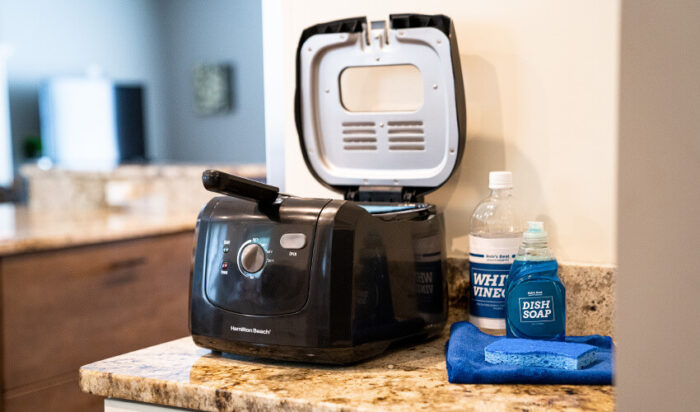
- Drain out all the oil from your fryer.
- Restore the holder with warm soapy water.
- Turn ON the fryer, to let the soap water heat up even more.
- Clench a soft brush or cloth and start scrubbing the inside specks of dirt.
Ta-da! You understand what I’m tryna say!
How many times the oil can be reused?
Reuse the fresh oil three to four times for breaded and battered food while with potato chips or any cleaner-frying items, it’s good to reuse the oil at least eight times. Excess reusability will influence health by generating free radicals that lead to inflammation and furthermore ailments.
How to preserve the used oil for later purposes?
After deep frying, if you are planning to reuse the oil, allow the oil to be cooled off enough, let’s say, replenish it for about 2 hours to avoid any hazards.
Extract the food particles and debris present in the oil using a skimmer.
The next step is to strain the debris-free oil into a sealed and light-proof jar by using a cheesecloth or a coffee filter.
Where to store the oil to extend its shelf life?
The shelf life of oil depends on the best before the date and how it is stored.
So store the filtered oil in a dark, cool place. Keeping the oil in the presence of sunlight can easily wreck the oil’s quality and consequently make the oil go unpleasant rapidly. Ultimately our aim is to protect the oil from exposure of sunlight. And yeah don’t ever try to freeze your oil, because it will alter the structure of the oil by making it more rancid.
Signs of spoilage of your oil
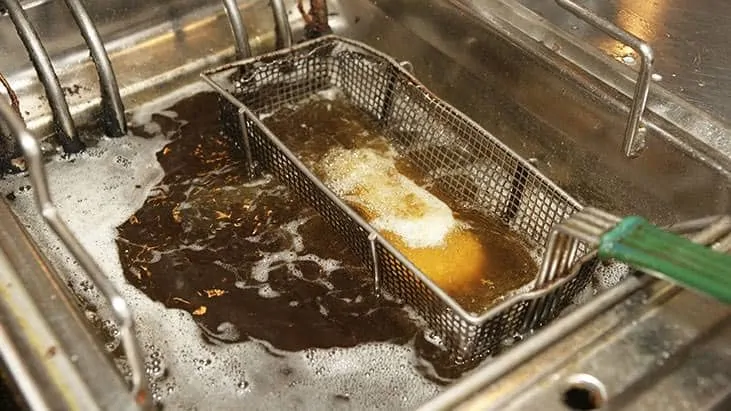
If your oil looks like this in the above image, then I would suggest you….change it ASAP.
Rancidity occurs when the oil is fried at excess heat, either unprotected to too much heat or due to the date of manufacture. In a scientific glimpse, rancidity arises when the oil molecules become oxidized through the exposure of light, air, or heat.
As a matter of fact, it is too easy to find rotten oil than the best quality oil.
Signs to change your used oil immediately with any hesitation :
- It produces foam on the surface of the oil.
- A fishy or burning smell.
- The oil gives out more smoke than it did earlier.
- The oil as well as the food seem to look darker in color than usual.
- Apart from it’s appearances, the food made out of spoiled oil will tend to have a stale or burnt taste. Yuck!!
Ways to Improve the lifespan of your oil

- The first and foremost thing is to keep your deep fryer clean and neat.
- Filter the oil after using it. If you’re using oil on a daily basis then it should be filtered twice a day and skimmed every 15 minutes.
- Keep the oil in a tight lid container and thereby cover the fryer with a cloth when it is not in use in order to avoid outside particles from falling into it.
- Regulate the temperature around 375 degrees Fahrenheit or lower than it while frying. Each and every frying oil has an ideal cooking temperature, so a high temperature could possibly decrease the cooking time which causes the oil to burn with an unpleasant taste along with a low span of the oil easily. Make sure the food is clear from the excess batter.
- Use suitable oil for your deep fryer.
- Salting the food should be done only after deep frying.
How to dispose of old oil?
Dumping of old oil should be performed carefully. Most of the people chuck it down their kitchen sink, which eventually results in clogging and damages the plumbing too. On the other hand, if it is spilled outside on the ground, it would someday cause problems for wildlife.
So think before you act!
Possible ways to dispose of your olds oil :
Well, it is a mandatory thing for every product to be disposed of properly after it’s used.
- You can store the old oil in an empty milk carton or in any waste bottle and throw it away along with your other trash. NOTE: Put it into the non-recyclable box.
- Freeze the old oil and throw it into the garbage.
- Well, it’s like killing two birds with one stone, you can turn the leftover oil into biodiesel (is a domestically produced, clean-burning, renewable substitute for petroleum diesel).
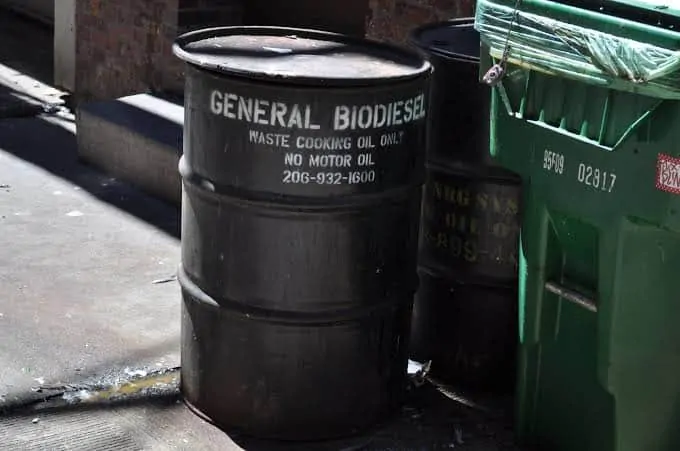
- Used vegetable or cooking oil is both eco-safe and effective at killing weeds by pouring the used oil on both foliage and stem.
- Everyone does want to avoid the spilling of oil from the garbage bags, so in order to mix the old oil with an absorbent material such as flour, sawdust to hold a consistency.
- The fat trapper system is a plastic container that holds the oil’s grease and in an odor-free manner. Click here to have this mess-free oil disposal:
